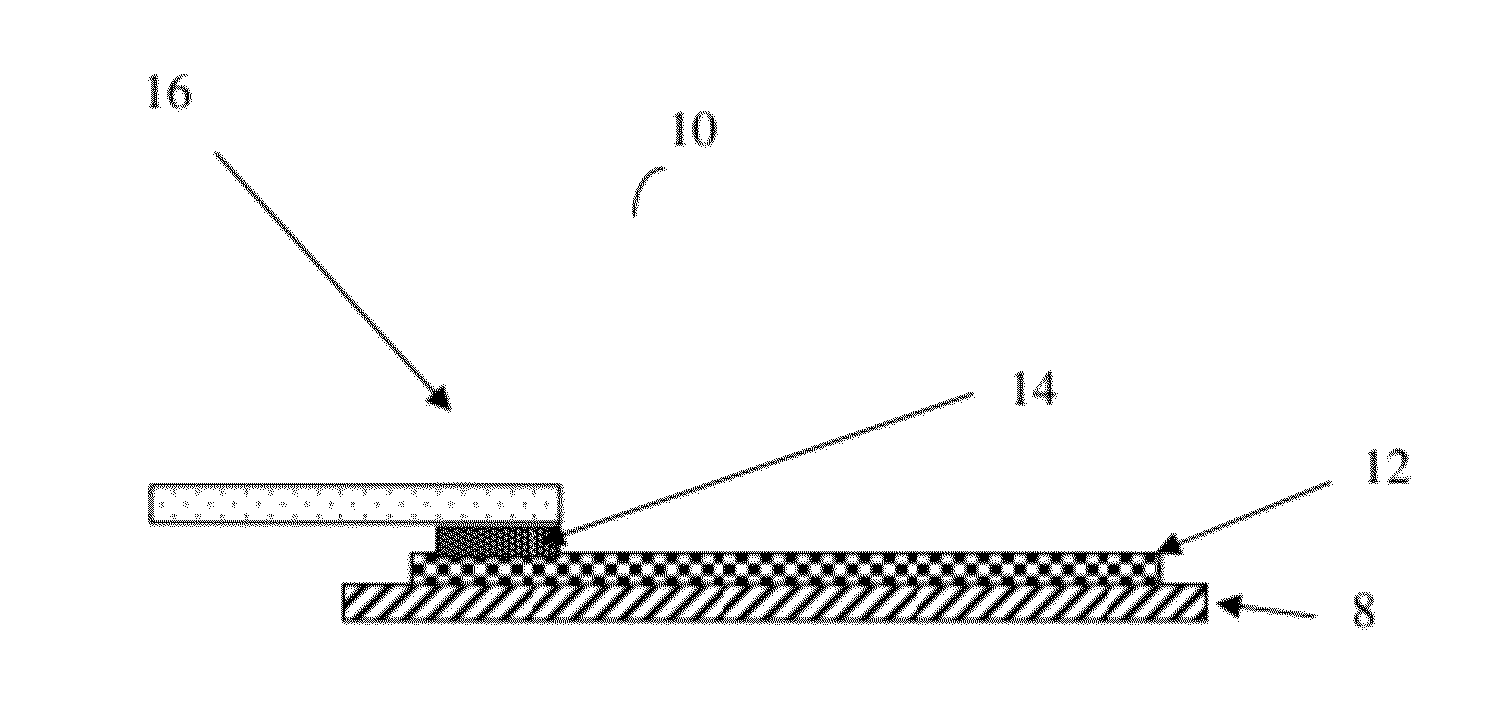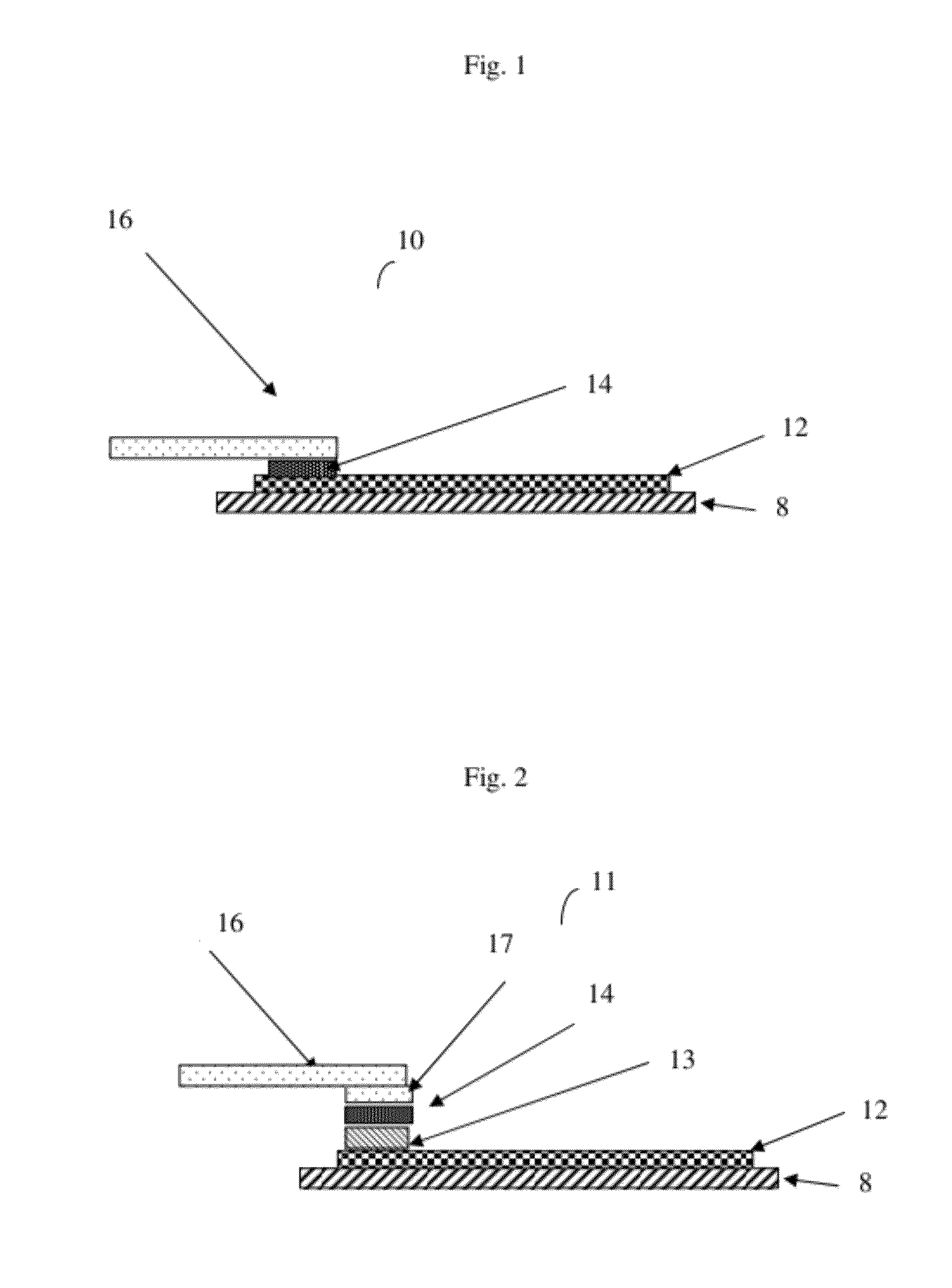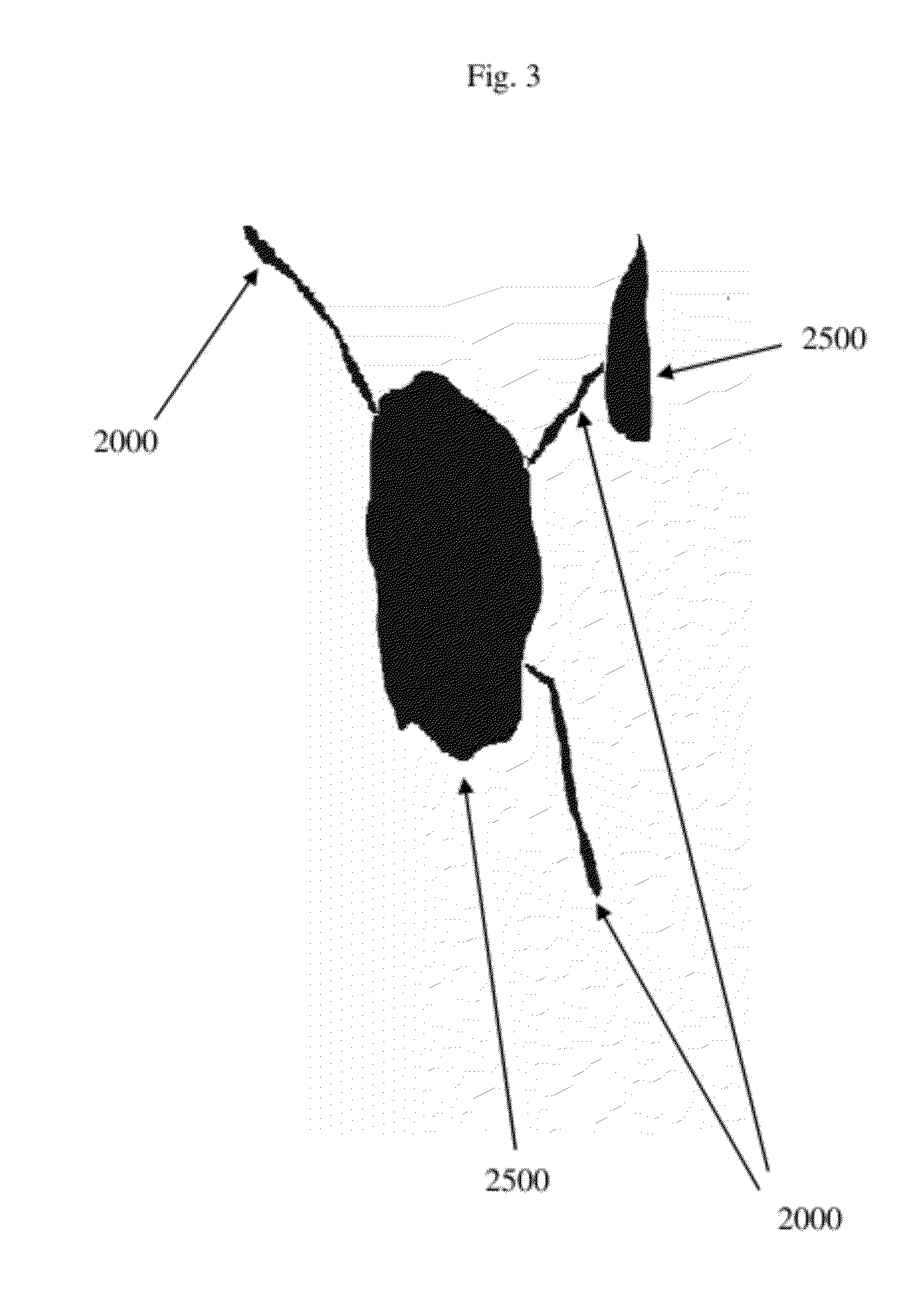Bondable conductive ink
a conductive ink and conductive technology, applied in the field of bondable conductive inks, can solve the problems of low cost of flexible printed circuit assemblies, relatively high cost, and inability to easily connect and connect with and to other circuit assemblies, devices, and/or apparatuses, etc., and achieve cost effective attachment and/or interconnection, reliable
- Summary
- Abstract
- Description
- Claims
- Application Information
AI Technical Summary
Benefits of technology
Problems solved by technology
Method used
Image
Examples
Embodiment Construction
[0030]Conductive inks, dyes, and coatings currently available for producing printed or flexible electronics are formed by adding conductive materials in powder form to a polymer base with a solvent component and mixing the materials, base, and solvent to produce a uniform wet dispersion. The dispersion is used to print or apply the circuit members on the flexible non conductive polymeric film, cloth, or thread referred to as the flexible substrate. The dispersion is then cured with heat or ultraviolet light. The result is a conductive circuit formed on the flexible substrate.
[0031]In spite of the resulting circuit having a very low cost that is beneficial to the manufacturer and consumer, there are significant drawbacks such as being difficult to create a connection to another circuit component. These inks and coatings used to form these conductive traces do not have the ability to be wetted by the solder for a solder joint and have very low heat dissipation properties so that solde...
PUM
| Property | Measurement | Unit |
|---|---|---|
| diameter | aaaaa | aaaaa |
| diameter | aaaaa | aaaaa |
| length | aaaaa | aaaaa |
Abstract
Description
Claims
Application Information
 Login to View More
Login to View More - R&D
- Intellectual Property
- Life Sciences
- Materials
- Tech Scout
- Unparalleled Data Quality
- Higher Quality Content
- 60% Fewer Hallucinations
Browse by: Latest US Patents, China's latest patents, Technical Efficacy Thesaurus, Application Domain, Technology Topic, Popular Technical Reports.
© 2025 PatSnap. All rights reserved.Legal|Privacy policy|Modern Slavery Act Transparency Statement|Sitemap|About US| Contact US: help@patsnap.com



